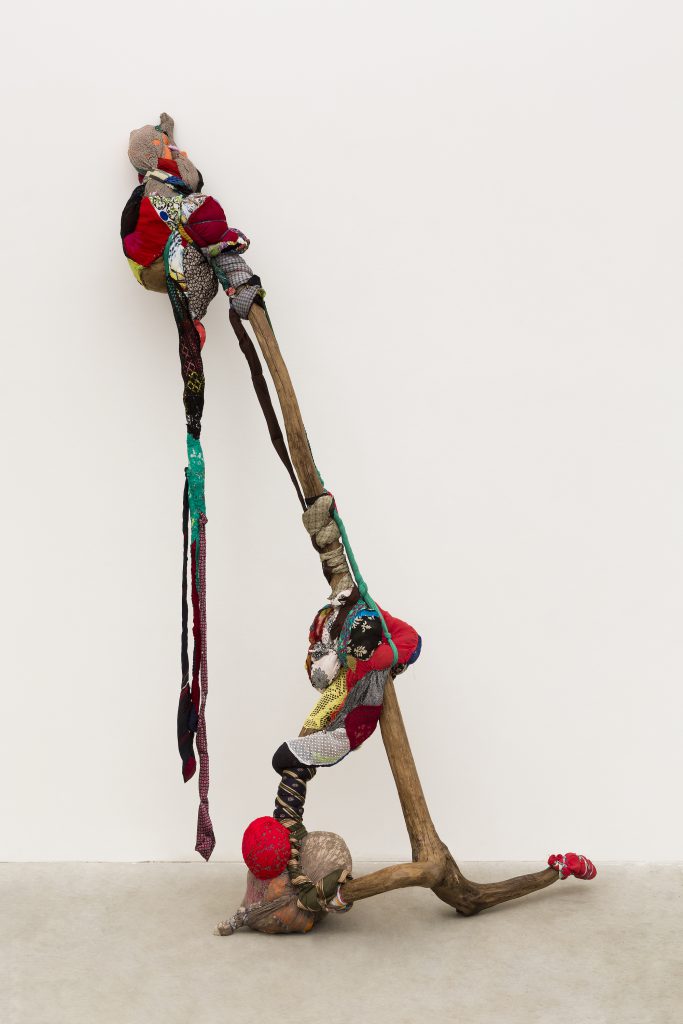
Sonia Gomes, Untitled, from the Raiz series, 2019, stitching, bindings, different fabrics, wire, and laces on wood, 280 x 150 x 80 cm, courtesy of the artist and Mendes Wood DM, Brussels / New York / São Paulo
Sonia Gomes, Untitled, from the Raiz series, 2019, stitching, bindings, different fabrics, wire, and laces on wood, 280 x 150 x 80 cm, courtesy of the artist and Mendes Wood DM, Brussels / New York / São Paulo

Suspended from the ceiling, leaning against the wall, or resting on the floor, Sonia Gomes’s sculptures recall bodies frozen between calmness and tension, capturing a distinct combination of fragility and rigor. Crafted from an array of found and gifted materials, most prominently colored and patterned fabrics, branches of driftwood, and fragments of discarded furniture, her structures enfold their own corporeal will between tightening and releasing. While her work is influenced by African folk traditions, Surrealist forms, and Brazilian modernism, Gomes locates her practice as “about my interior, about a hidden part of the body, the part that we do not see.”
The concealed becomes visible in the Torções (2017) and Raiz (2018) series in which textiles, netting, and ropes tangle into womb-like landscapes or tie along wooden torsos like contracting muscles. Nerves, blood vessels, delicate roots, or rhizomes adorn the plywood collage from the Madeira series (2013–14), while other pieces resemble unidentifiable animals or microscopic beings. The most figurative piece on display, Aninhado (2019), suggests a tormented (female) body resisting an enclosing metal case—a crib, a nest, a cage—at the verge of breaking free from its confinements, metaphorically hinting at the ongoing struggles against racism, patriarchal dominance, and sexual abuse.
Gomes began her intuitive process of deconstructing and reassembling materials at a young age. Growing up in Caetanópolis, the birthplace of the Brazilian textile industry, the early passing of her Black mother left her in the care of her white father’s Christian traditions. She came to craft as a form of escapism, commemoration, and self-healing, celebrating the Afro-Brazilian spirituality that was passed down to her from her maternal grandmother. It is with this solemn attention to detail that Gomes incorporates her own memories and dreams into each element, creating pieces of captivating resilience that offer protective habitats on the one hand and loopholes for novel ways of existing on the other.
Sonia Gomes, Untitled, from the Raiz series, 2019, stitching, bindings, different fabrics, wire, and laces on wood, 280 x 150 x 80 cm, courtesy of the artist and Mendes Wood DM, Brussels / New York / São Paulo